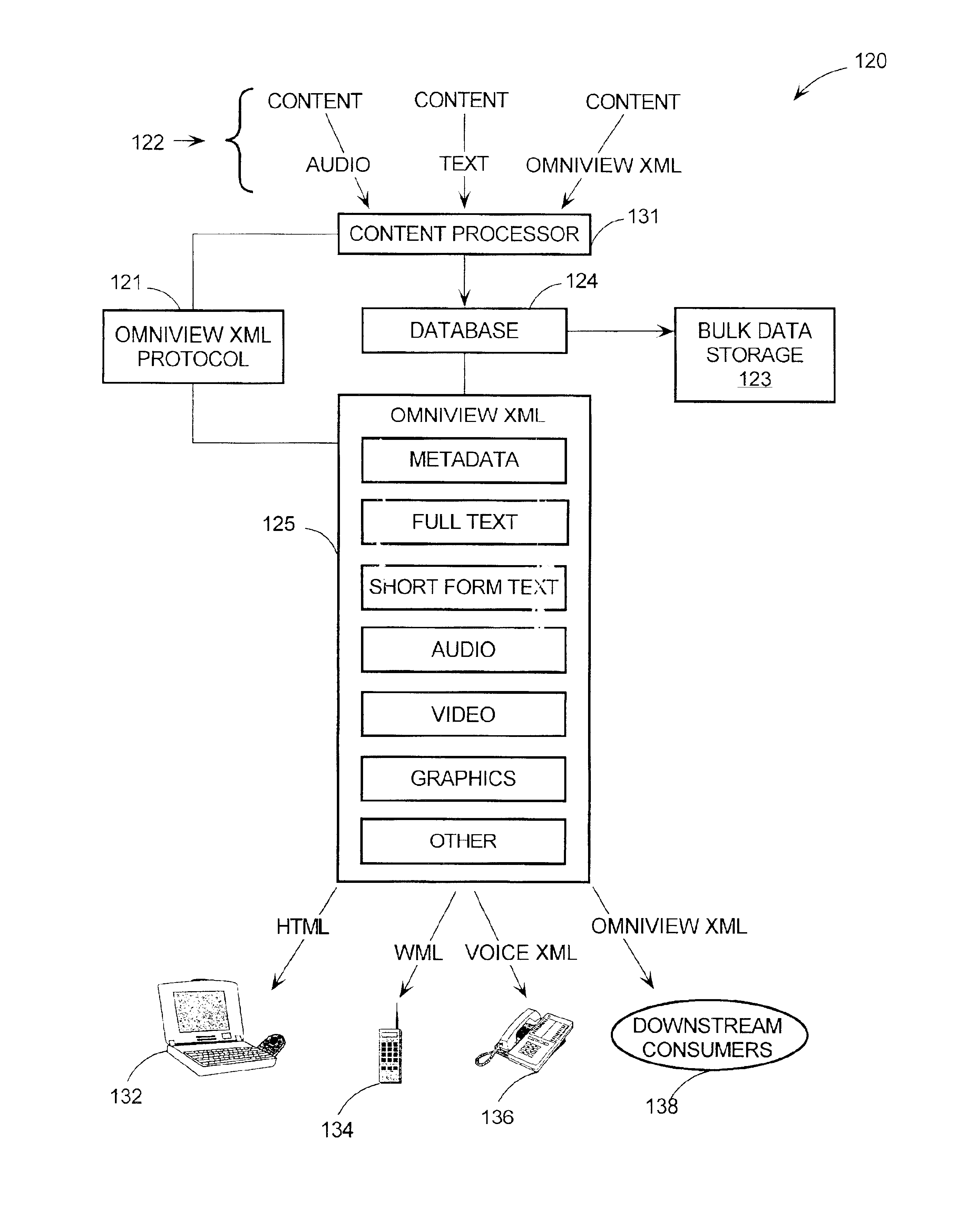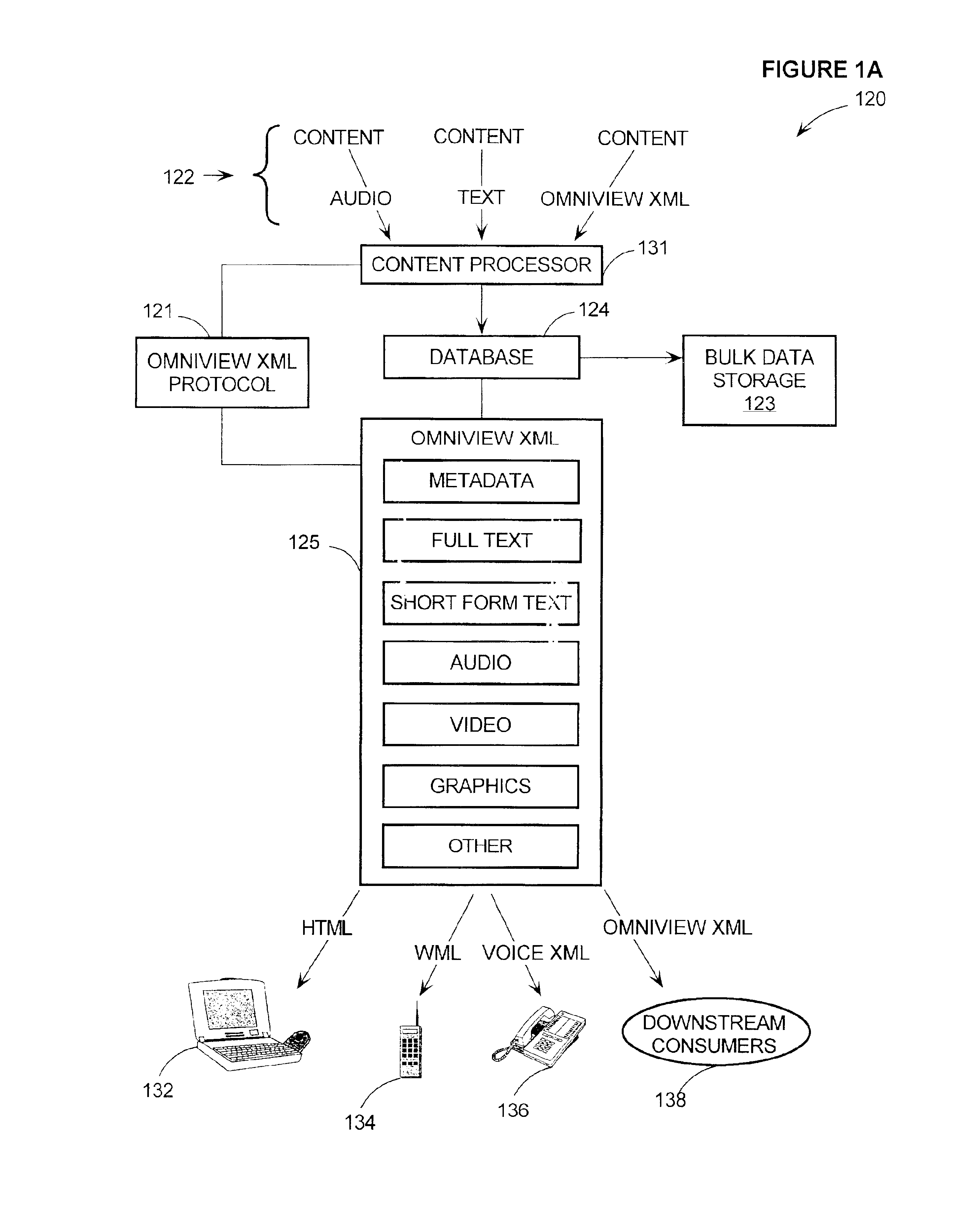System and method for construction, storage, and transport of presentation-independent multi-media content
a multi-media content and content technology, applied in the field of data objects, can solve the problems of not being able to modify, not being able to adapt to other applications, and not being able to meet the requirements of other applications, and achieve the effect of the richest possible user experien
- Summary
- Abstract
- Description
- Claims
- Application Information
AI Technical Summary
Benefits of technology
Problems solved by technology
Method used
Image
Examples
Embodiment Construction
[0033]The nature, objectives, and advantages of the invention will become more apparent to those skilled in the art after considering the following detailed description in connection with the accompanying drawings.
Hardware Components & Interconnections
Accumulation / Distribution of Multi-Presentation Content
[0034]One aspect of the present invention concerns a system for construction, storage, and / or transport of “multi-presentation content.” Multi-presentation content comprises a number of different data elements representing the same underlying data, but where each data element is of a different media type. In the presently illustrated example, media types include audio, full text (text-transcription of the audio), short-form text, graphics, and video. Without departing from the present invention, additional media types may be utilized, such as “tagged” text (text having its different elements formatted by start / end tags), “mixed” format (multiple different media types), “file” forma...
PUM
 Login to View More
Login to View More Abstract
Description
Claims
Application Information
 Login to View More
Login to View More - R&D
- Intellectual Property
- Life Sciences
- Materials
- Tech Scout
- Unparalleled Data Quality
- Higher Quality Content
- 60% Fewer Hallucinations
Browse by: Latest US Patents, China's latest patents, Technical Efficacy Thesaurus, Application Domain, Technology Topic, Popular Technical Reports.
© 2025 PatSnap. All rights reserved.Legal|Privacy policy|Modern Slavery Act Transparency Statement|Sitemap|About US| Contact US: help@patsnap.com



